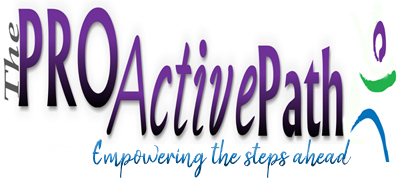
Everyone makes mistakes. I’ve certainly made my share. I guess the upside of making a mistake is the powerful lesson that follows. Of course, the learning only “sinks in” when the memory of error lingers longer than the mistake itself.
Wouldn’t it be great to avoid all those unforeseen blunders long before they throw you into a tailspin of reactive, uninformed decision-making? While you can’t control everything in your life, like your kidney disease that appears to have the upper hand in this game, you could influence the outcome by being more prepared for all those unpredictable circumstances.
Below you find some golden nuggets to help you avoid the 5 most common Chronic Kidney Disease (CKD) patient landmines by becoming your own best advocate. Incorporate these proactive behaviors and you’ll soon be on your way to becoming a more empowered patient in pursuit of your best life possible. The life every CKD patient deserves.
Mistake #1: Ignoring Your Numbers
 Are you monitoring your blood pressure, weight and lab results closely, or are you relying on your doctors to translate those hard to pronounce words and jumbled corresponding values? Don’t assume you’re being told everything you need to know. You’re the patient and you need to take some responsibility here too by asking key questions and encouraging a dialogue. Your numbers play a significant role in the progression of your disease. They also alert you to a potential problem that you might not be aware of and that you might be able to reverse before the problem worsens.
Are you monitoring your blood pressure, weight and lab results closely, or are you relying on your doctors to translate those hard to pronounce words and jumbled corresponding values? Don’t assume you’re being told everything you need to know. You’re the patient and you need to take some responsibility here too by asking key questions and encouraging a dialogue. Your numbers play a significant role in the progression of your disease. They also alert you to a potential problem that you might not be aware of and that you might be able to reverse before the problem worsens.
To keep yourself well informed and proactively involved in your health, step-up your game a notch or two by following these patient self-advocacy tips:
- Set your digital calendar to sound an alarm or send you a message when it’s time to check your BP and weight, or get down to the lab.
- Keep a spreadsheet for tracking your BP and weight by date.
- Keep an observation diary for tracking new and unusual symptoms that might be associated with fluctuations in areas such as BP or weight.
- Insist on getting a copy* of your lab results faxed to you at the same time your doctor’s office receives them. This way you can review them and prepare your questions in advance. (*Your doctor will need to indicate this “CC” request on EACH lab order. Do not leave the office until this request has been confirmed. There’s nothing more frustrating than arguing with a lab about your right to obtain your results).
- Create a spreadsheet for your lab values as well. This will allow to plot your numbers by date for visual comparison trends. Being organized will also allow you to more efficiently formulate your questions at each visit.
While your labs can look like Greek to you, do not be intimidated. Keep your eagle eyes on these numbers at all times.
(1) eGFR (this is an estimated number that shows how efficiently your kidneys are sifting, sorting and cleaning waste from your blood).
(2) Creatinine (the measurement that gauges your kidney’s ability to breakdown muscle cell waste.
(3) BUN (the amount of protein in your blood and urine).
Of course, paying attention to all your numbers, including electrolytes like potassium, blood cell counts like hemoglobin and hematocrit, and monitoring calcium, phosphate—and lipids, is also very important. Of course, watching for blood or protein in the urine must not be overlooked either. Follow these tips to more effectively partner with your healthcare team as you become your own best advocate. Information is power.
Mistake #2: Forgetting To ASK & TELL
 If you are just showing up for your appointments without a pen and a legal pad full of questions, list of concerns—and your spreadsheets with all your number comparisons, you’re missing out on a valuable wisdom-gaining experience. When you choose to engage, you’ll influence the focus of each appointment from the moment your doctor walks through the door.
If you are just showing up for your appointments without a pen and a legal pad full of questions, list of concerns—and your spreadsheets with all your number comparisons, you’re missing out on a valuable wisdom-gaining experience. When you choose to engage, you’ll influence the focus of each appointment from the moment your doctor walks through the door.
Here Are Your Top 3 “ASK’s”:
- What’s your “take” on my last labs and what can I do to impact them more favorably?
- Should I need renal replacement, do you think I’d be eligible for transplant?
- If not now, what could I do to improve my chances?
Become an inquiring mind. Never stop asking and learning.
Here Are Your Top 3 “TELL’s”:
- Your symptoms, observations and concerns since your last visit. (Use your observation diary).
- Obvious number changes. (Utilize your BP, weight and lab comparison spreadsheets).
- Your concerns, desires and future goals.
If initiating dialogues with you doctor is uncomfortable for you, state it as so. For example, you can say “This is a bit awkward (or embarrassing or maybe even a bit premature), but I think it’s important enough to bring up. May I use this appointment time to share a couple of concerns I have with you?”
If you find your doctor seems distracted when you try to open this dialogue or just too rushed to listen, you might consider email communication as an alternative if your doctor is open to it. Bottom line, it’s extremely important to sense the door is always open for communication with your doctor. You should not have to walk on eggshells to approach a topic. Open communication is the only way to build respect and trust. If your attempts fall on flat ears, it might be a sign to get a second opinion while exploring other care providers in your network. Your job is advocate for yourself by partnering with your care providers. You’ll never be able to achieve your goals if you don’t feel like you’re an integral part of the team working on a plan to secure your best future.
Mistake #3: Waiting To Get Sicker
 If you’re waiting to get sicker before you get serious about your future, you could be in for a rude awaking. Open your eyes to what someday could be the inevitable. Look at it this way, “It’s not a matter of if you’ll ever develop renal failure, it’s a matter of experiencing failure of a different kind. Failure to do something (i.e.; seize opportunity) while you still can.”
If you’re waiting to get sicker before you get serious about your future, you could be in for a rude awaking. Open your eyes to what someday could be the inevitable. Look at it this way, “It’s not a matter of if you’ll ever develop renal failure, it’s a matter of experiencing failure of a different kind. Failure to do something (i.e.; seize opportunity) while you still can.”
When you don’t have all the particulars, it is easy to think that you have more time than you actually have. This is an illusion. By using what I call the “side-view mirror approach,” you’ll be more cognizant of potential illusions, just like “Objects in the mirror may be closer than they appear.”
While the “if” and “when” of losing complete kidney function may be unknown to you at this time, create an imaginary side-view mirror for yourself that reads “Renal failure may be closer than it appears.” This perception alone will motivate you be fully prepared with a “ready-set-go” mindset for seizing optimal opportunities.
 The Chinese symbol for crisis combines figures depicting both danger and opportunity. We can learn from this by embracing each precarious situation as an opportunity to discover a better path.
The Chinese symbol for crisis combines figures depicting both danger and opportunity. We can learn from this by embracing each precarious situation as an opportunity to discover a better path.
An addict waits to hit rock bottom before doing something for themselves. You don’t have to wait until you hit rock bottom of your health, in fact you shouldn’t. Partner with a mentor and coach-advocate along with your healthcare team to create a coalition of specialists to support your proactive intentions. This is how you’ll be able to secure your best life possible.
Mistake #4: Assuming Dialysis Comes First
 Most CKD patients rarely pick transplant as their first choice, mostly because they are unaware of this opportunity and its unparalleled value. Perhaps you thought dialysis was required before you’d be considered for a transplant. This misconception can keep superior choices beyond your reach.
Most CKD patients rarely pick transplant as their first choice, mostly because they are unaware of this opportunity and its unparalleled value. Perhaps you thought dialysis was required before you’d be considered for a transplant. This misconception can keep superior choices beyond your reach.
Woefully, less than 3% of CKD patients choose a preemptive transplant (a transplant performed before the need for dialysis). If there’s a chance that you could be a transplant candidate, you’ll need to proactively work a plan to attract potential live-kidney donors. If you are told you would not be eligible, be sure to verify from through a second opinion. Also, find out what you could do to change that status, if anything. (Common transplant restrictions include serious active infection, active malignancy, heart disease and obesity). Learn the rules and then give it all you’ve got to achieve the best possible outcome.
Mistake #5: Neglecting To Disclose Your Story
 Are you and your kidney disease hiding in the closet? If so, you’re not alone. I didn’t tell a sole about my condition for years. But then I realized I was doing myself and others a disservice. It takes a village to increase awareness. Your story can touch listeners heartstrings—particularly when it is shared from your heart and when you expect nothing in return. Listeners not only need to learn about your situation, but they also need to know the frightening realities, like the nearly 97,000 people waiting for a kidney transplant, our national organ shortage and it’s catastrophic wait for deceased organs. No doubt your story will elicit curiosity to learn more—and perhaps even do more.
Are you and your kidney disease hiding in the closet? If so, you’re not alone. I didn’t tell a sole about my condition for years. But then I realized I was doing myself and others a disservice. It takes a village to increase awareness. Your story can touch listeners heartstrings—particularly when it is shared from your heart and when you expect nothing in return. Listeners not only need to learn about your situation, but they also need to know the frightening realities, like the nearly 97,000 people waiting for a kidney transplant, our national organ shortage and it’s catastrophic wait for deceased organs. No doubt your story will elicit curiosity to learn more—and perhaps even do more.
Don’t think that sharing your story is pointless because if someone really wanted to help they would have already done so. This is foolish and self-sabotaging thinking. Until others truly understand your situation and the national need, they can’t begin to imagine how they might help you or find someone who could. It’s your duty to become a voice for all. Hope for a better tomorrow starts with you.
About The Author
As a motivational speaker, 3x published author, patient mentor and private coach, Risa has one goal: To empower kidney patients to become their own best advocate. Risa is the founder of the TransplantFirst Academy, The Proactive Path and Simon Says Seminars, Inc. Risa also runs the Phoenix Chapter of the Polycystic Kidney Disease Foundation while serving on prestigious renal organization advisory committees. Known as “The kidney patient’s patient advocate,” Risa followed the proactive systems she created for herself and others—and is now living her best life ever. This is what she wants for all transplant eligible patients. Her tips, scripts and Donor Magnet® system can be found in her book: Shift Your Fate: Life-Changing Wisdom For Proactive Kidney Patients available on amazon. For more information visit: www.transplantfirst.org ; www.theproactivepath.com and
www.shiftyourfate.com.
 According to an article published in the Wall Street Journal on March 31, 2014, patient outcomes can be impacted by how engaged they are in their care. In this article, How Doctors Rate Patients, studies show that patient outcomes are better—and costs are lower for patients who are actively involved in their care. So why aren’t more patients getting actively involved? Because most patients lack the skills and the confidence to be this kind of patient – and because most healthcare providers haven’t yet recognized this unique way to improve patient engagement and outcomes.
According to an article published in the Wall Street Journal on March 31, 2014, patient outcomes can be impacted by how engaged they are in their care. In this article, How Doctors Rate Patients, studies show that patient outcomes are better—and costs are lower for patients who are actively involved in their care. So why aren’t more patients getting actively involved? Because most patients lack the skills and the confidence to be this kind of patient – and because most healthcare providers haven’t yet recognized this unique way to improve patient engagement and outcomes.

 Many kidney disease patients are floating in a sea of uncertainty due to inadequate patient education and various knowledge barriers. Consequently, the patient’s understanding of various treatment options and outcomes—and how the timing of engagement can impact each outcome, is often lost in the shuffle of care. With the clock ticking behind the scenes, the patient’s inability to trigger optimal timing for best outcomes remains far beyond the scope of their awareness and comprehension.
Many kidney disease patients are floating in a sea of uncertainty due to inadequate patient education and various knowledge barriers. Consequently, the patient’s understanding of various treatment options and outcomes—and how the timing of engagement can impact each outcome, is often lost in the shuffle of care. With the clock ticking behind the scenes, the patient’s inability to trigger optimal timing for best outcomes remains far beyond the scope of their awareness and comprehension. 
 Are you monitoring your blood pressure, weight and lab results closely, or are you relying on your doctors to translate those hard to pronounce words and jumbled corresponding values? Don’t assume you’re being told everything you need to know. You’re the patient and you need to take some responsibility here too by asking key questions and encouraging a dialogue. Your numbers play a significant role in the progression of your disease. They also alert you to a potential problem that you might not be aware of and that you might be able to reverse before the problem worsens.
Are you monitoring your blood pressure, weight and lab results closely, or are you relying on your doctors to translate those hard to pronounce words and jumbled corresponding values? Don’t assume you’re being told everything you need to know. You’re the patient and you need to take some responsibility here too by asking key questions and encouraging a dialogue. Your numbers play a significant role in the progression of your disease. They also alert you to a potential problem that you might not be aware of and that you might be able to reverse before the problem worsens. If you are just showing up for your appointments without a pen and a legal pad full of questions, list of concerns—and your spreadsheets with all your number comparisons, you’re missing out on a valuable wisdom-gaining experience. When you choose to engage, you’ll influence the focus of each appointment from the moment your doctor walks through the door.
If you are just showing up for your appointments without a pen and a legal pad full of questions, list of concerns—and your spreadsheets with all your number comparisons, you’re missing out on a valuable wisdom-gaining experience. When you choose to engage, you’ll influence the focus of each appointment from the moment your doctor walks through the door. If you’re waiting to get sicker before you get serious about your future, you could be in for a rude awaking. Open your eyes to what someday could be the inevitable. Look at it this way, “It’s not a matter of if you’ll ever develop renal failure, it’s a matter of experiencing failure of a different kind. Failure to do something (i.e.; seize opportunity) while you still can.”
If you’re waiting to get sicker before you get serious about your future, you could be in for a rude awaking. Open your eyes to what someday could be the inevitable. Look at it this way, “It’s not a matter of if you’ll ever develop renal failure, it’s a matter of experiencing failure of a different kind. Failure to do something (i.e.; seize opportunity) while you still can.” The Chinese symbol for crisis combines figures depicting both danger and opportunity. We can learn from this by embracing each precarious situation as an opportunity to discover a better path.
The Chinese symbol for crisis combines figures depicting both danger and opportunity. We can learn from this by embracing each precarious situation as an opportunity to discover a better path. Most CKD patients rarely pick transplant as their first choice, mostly because they are unaware of this opportunity and its unparalleled value. Perhaps you thought dialysis was required before you’d be considered for a transplant. This misconception can keep superior choices beyond your reach.
Most CKD patients rarely pick transplant as their first choice, mostly because they are unaware of this opportunity and its unparalleled value. Perhaps you thought dialysis was required before you’d be considered for a transplant. This misconception can keep superior choices beyond your reach. Are you and your kidney disease hiding in the closet? If so, you’re not alone. I didn’t tell a sole about my condition for years. But then I realized I was doing myself and others a disservice. It takes a village to increase awareness. Your story can touch listeners heartstrings—particularly when it is shared from your heart and when you expect nothing in return. Listeners not only need to learn about your situation, but they also need to know the frightening realities, like the nearly 97,000 people waiting for a kidney transplant, our national organ shortage and it’s catastrophic wait for deceased organs. No doubt your story will elicit curiosity to learn more—and perhaps even do more.
Are you and your kidney disease hiding in the closet? If so, you’re not alone. I didn’t tell a sole about my condition for years. But then I realized I was doing myself and others a disservice. It takes a village to increase awareness. Your story can touch listeners heartstrings—particularly when it is shared from your heart and when you expect nothing in return. Listeners not only need to learn about your situation, but they also need to know the frightening realities, like the nearly 97,000 people waiting for a kidney transplant, our national organ shortage and it’s catastrophic wait for deceased organs. No doubt your story will elicit curiosity to learn more—and perhaps even do more.